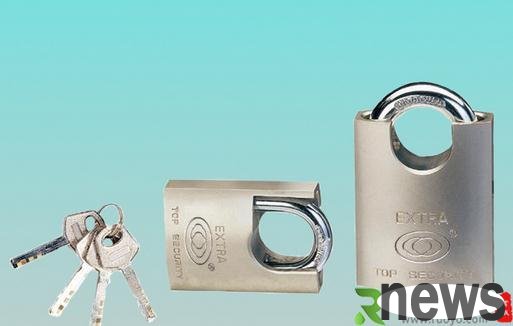
padlock is broken? Padlock selection skills
Padlock selection skills
Now that thieves are stealing in the house, people have increasingly demanded for padlocks, but many people feel at a loss when choosing various padlocks on the market. Today we will ask experts to explain to us how to choose a good padlock.
1. Look at surface treatments. General surface treatments include electroplating, spraying and coloring. Through these surface treatments, a protective film can be formed on the product, which can prevent corrosion and rust, while making the product more beautiful and durable, and can directly measure the quality of the product. Locks with good quality are generally electroplating, with moderate coating, very uniform color, and no signs of bubbles, rust or oxidation.
2. Look at the materials
The lock materials on the market are basically divided into stainless steel, copper, zinc alloy, iron and aluminum. Stainless steel has good strength, strong corrosion resistance and unchanged color, and is the best lock-making material; copper is relatively versatile, has superior mechanical properties, and is also expensive; high-quality zinc alloys are strong and wear-resistant, have very strong corrosion resistance, and are easy to form, and are generally used to make mid-range locks. What should I do if the
padlock is broken?
Padlocks are common locks in life. Everyone knows that padlocks that have been used for a long time will be a little difficult to open due to the aging of the lock core of the padlock. At this time, many people will refuel inside to lubricate the lock core, so that the problem of difficulty in opening the padlock will be solved. But some people encounter such a problem. If you add fuel to the padlock, not only will it not make the padlock easier to open, but it will also cause the padlock to be unable to be opened. Why is this? Let’s go to professional locksmiths to tell us what the reason is.
The professional locksmith believes that the reason is that he may have added oils with higher viscosity, such as vegetable oil, engine oil, etc. When it encounters low temperatures or dust sticks, it increases the viscosity of the oil. After the key is inserted into the lock body, the bullet that is discharged into the lock body by the key is stuck. The elastic force of the bullet spring is too small and it cannot push out the bullet, so of course the lock core cannot rotate. The methods to open are:
1. After inserting the key, tap the side of the marble hole upwards a few times.
2. Use boiling water to scald the lock body to make the condensed oil look amazing
3. Pour gasoline into the padlock key hole and melt the condensed oil.
Remember, don’t recharge the e-liquid in the range hood waste oil box in the future, as it will be too sticky.
